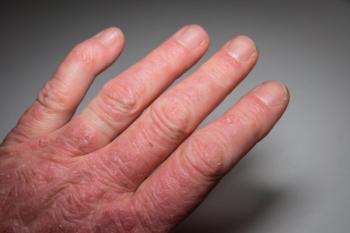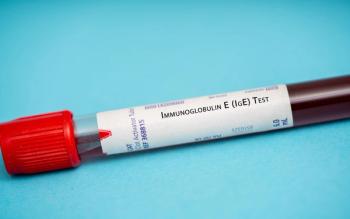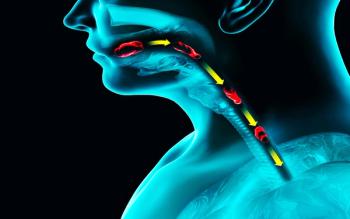
Inflammation
Latest News


Upadacitinib Demonstrates Efficacy in RA Treatment Regardless of Patient’s Baseline CRP Levels

Inflammatory Bowel Disease Associated With Progression to End-Stage Kidney Disease
Latest Videos

CME Content
More News


A co-expression network analysis pinpoints different gene expressions that can potentially predict rheumatoid arthritis (RA) outcomes during pregnancy.

A study from UCSD highlights how advances in imaging modalities and utilization could aid in the early detection of psoriatic arthritis.

If approved, the treatment would be the first of its kind for young children enduring eosinophilic esophagitis (EoE).

Persistent disability and risks of death were associated with inflammatory levels in patients following major abdominal surgery.

Patients with IBD-RA and depression were younger, more likely to be female, and were more frequently White compared with controls.

In a longitudinal case study, researchers found that higher inflammation levels may predict poor outcomes following bariatric surgery.

Adverse effects associated with glucocorticoid use among patients with rheumatoid arthritis may not be as burdensome as previously indicated.

Combination endoscopic sinus surgery (ESS) and biological therapy significantly decreased polyp burden in refractory chronic rhinosinusitis with nasal polyposis (CRSwNP) compared with biologic therapy alone

Through a series of regression analyses, researchers projected the ever-increasing global burden of osteoarthritis (OA) until 2050.

Researchers analyzed numerous biomarkers in patients at risk for inflammatory arthritis to develop measurable scores indicating a patient's vulnerability to disease progression.

New research suggests that measuring the inflammatory marker myeloperoxidase (MPO) may be an effective strategy for the prediction of patients' risk of mortality in a myriad of cardiac—and potentially non-cardiac—diseases.

With data on side-opening cutting forceps showing above a 90% diagnostic rate for tissue biopsy in adult patients with eosinophilic esophagitis (EoE) who undergo biopsy of the esophageal lamina propia (ELP), investigators conducted a pilot study on use of side-opening cutting forceps in younger patients.

A study from China suggests calcium and magnesium malnutrition is associated with Crohn's disease inflammation and activity.

The current literature is lacking on outcomes among patients with comorbid chronic rhinosinusitis (CRS) and immunoglobulin deficiencies, especially for those who must use surgery to manage their CRS.

With this study, investigators hoped to advance their understanding of cellulitis-mimicking reactions among patients currently receiving chemotherapy.

Few validated measures exist to quantify sleep disturbance among patients who have the chronic inflammatory skin condition prurigo nodularis.

Outcomes of concern for this retrospective study were eosinophilic esophagitis (EOE) mucosal biopsies, EoE diagnosis, proton pump inhibitor initiation, and recommendations being followed for repeat esophagogastroduodenoscopy.

Higher levels of fractional exhaled nitric oxide (FeNO) were found in patients with eosinophilic esophagitis (EoE) and might be able to provide a measurement of clinical treatment response in a subset of these patients.

Scientists have found a new therapy for the severe inflammatory skin disorder.

More geographically and racially diverse population cohorts are needed to determine heritability risk in chronic rhinosinusitis with nasal polyps (CRSwNP) and chronic rhinosinusitis without nasal polyps (CRS).

Investigators evaluated long-term outcomes among individuals who have eosinophilic esophagitis (EoE) and initiated first-line treatment with a food elimination diet after experiencing remission following stoppage of proton pump inhibitor monotherapy.

Regardless of a prior history of swallowed topical corticosteroids, dupilumab was proven to be an effective treatment in patients with eosinophilic esophagitis.

The LIBERTY-PN PRIME and PRIME2 trials investigated itch response to dupilumab among patients who have prurigo nodularis.

In the phase 3 SINUS-24 and SINUS-52 trials, dupilumab improved clinical outcomes and and health-related quality of life among patients with chronic rhinosinusitis with nasal polyps (CRSwNP) and clinical features of obstructive lung disease.



















































